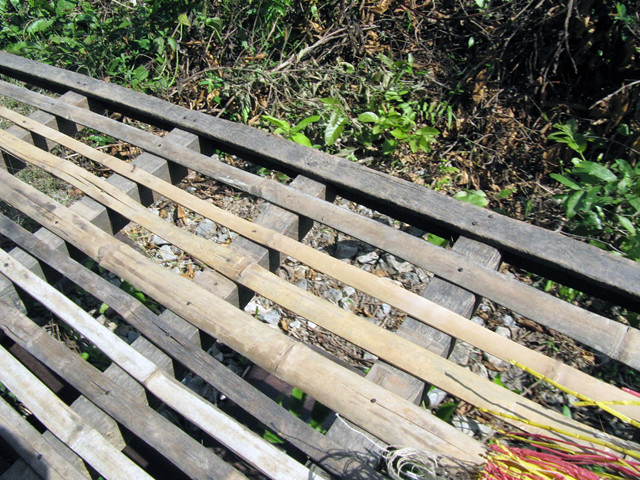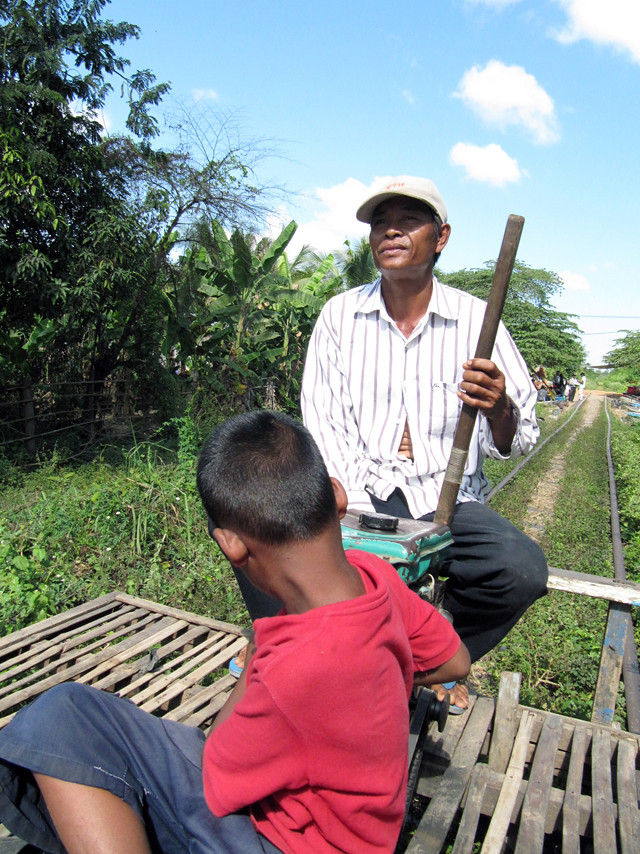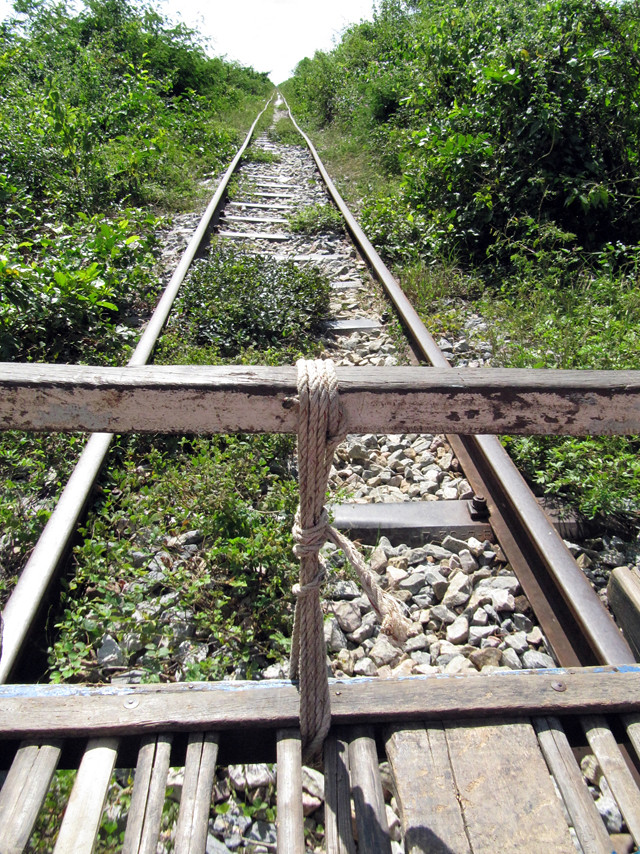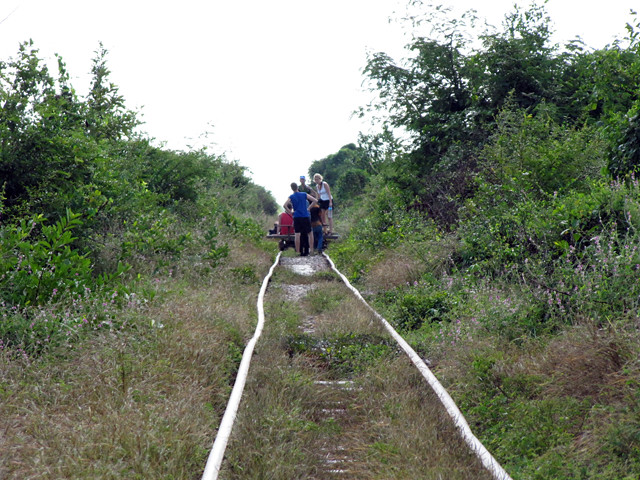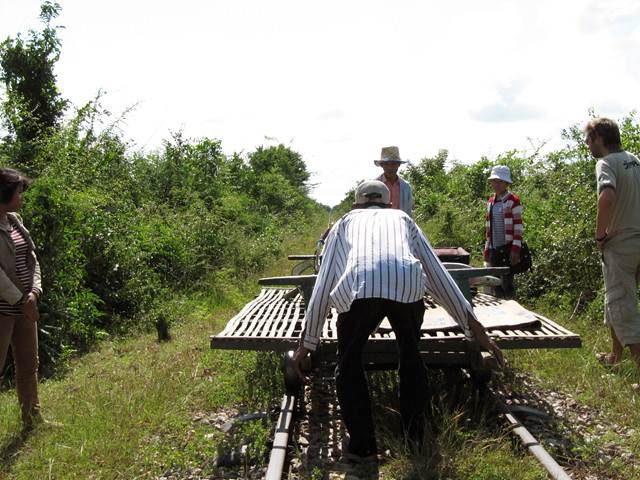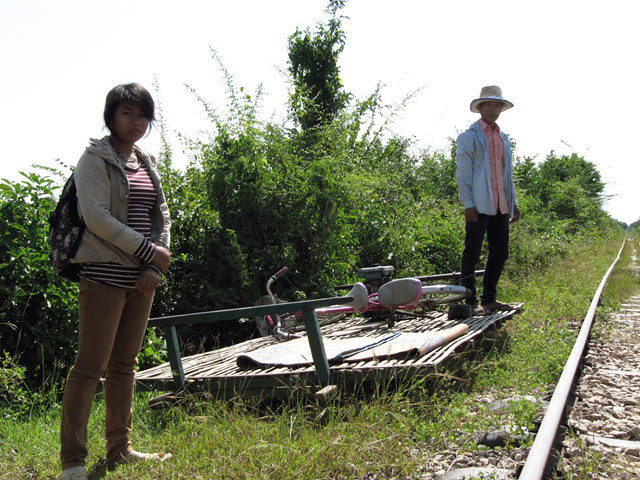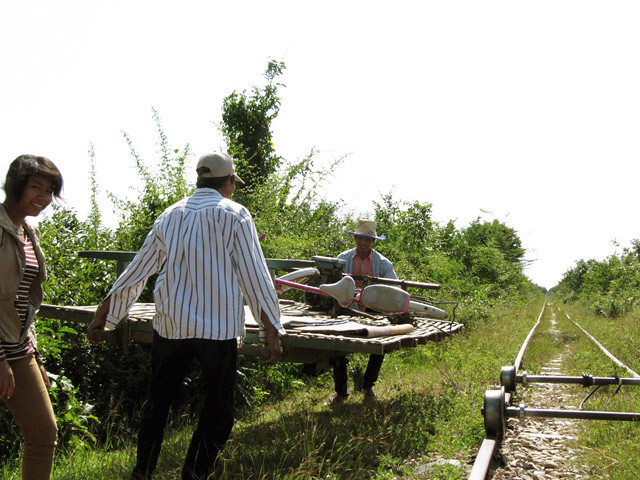Nestled somewhere in Battambang, Cambodia, is the Bamboo Train service, also known to locals as the norry. This Bamboo Train system, which links up villages, was created due to a simple problem – no cheap and fast mode of transportation between villages that could carry both people and goods.
The simple solution was as such – build a train (or rather a platform of sort) made of bamboo, two pairs of wheels and axles, and operated by a small engine-generator. The bamboo platform forms the base where people can sit on and goods can be placed. This platform then sits on two pair of metal wheel axles. This combination is what makes up the Bamboo Train.
However, for some reason unbeknownst to myself, only one train track was built. (According to this website, the single-tracks were already built by the French in the 1920s to transport goods, prior to the birth of the Bamboo Train system.)
Hence, the Bamboo Train works in this fashion.
The Bamboo Train moves along the track. When it spots another Bamboo Train coming from the opposite direction, it starts to slow down as it approaches that train:
Approaching another train
The locals operating the trains will then decide which train gets the right of way. Typically, the train that is carrying the heaver load of goods/people will get the right of way. Similarly, if there is only one train that is heading in a particular direction, and say two trains heading in the opposite, the two trains get right of way.
Everyone who is on the train with the lightest load (or the lone Bamboo train) is then required to hop off the train, where the train is then taken off the track to make way for the other train(s). Yes, you read it right. The entire train is “dismantled” (somewhat) and removed from the tracks. After the other train(s) has/have passed, that aforementioned lone train is then “reassembled” and placed back on the track, ready to continue its journey.
“Dismantling” the Bamboo Train
Locals waiting for the train coming from the opposite direction to pass
Reassembling the Bamboo Train
Setting up the engine-generator of the train
The process of “dismantling” and “reassembling” the train is so simple, yet most intelligent. Admittedly, the Bamboo Train isn’t quite a “train” per se as it is a “moving platform”, and it is not quite “dismantled” as it is simply carried off the wheels and placed aside. But this system works, and has been transporting locals since its inception some years ago.
These days, however, due to the ever-increasing tourism, a good half of the Bamboo Train’s users are foreigners from every land. These foreigners who wish to sit on their own “private” Bamboo Train, will have to pay up to a good USD8 – USD10 per person for a 14 km-long trip – a hefty price to pay compared to locals who only pay approximately USD1 per ride.
Despite having to fork out this considerable amount for a short train ride, the experience of the Bamboo Train ride is an unforgettable and exhilarating one, and one I would personally recommend. What better way to experience the Cambodian country side and breathe in the fresh air then to do so sitting on a Bamboo Train.
Though the train was not quite moving at bullet train speeds, sitting “in” the trains as it moved through grass plains and villages, and the process of having to stop and remove the entire train off the tracks each time another train came from the opposite direction, was an adventure in itself. And it was indeed an adventure like no other that left me grinning for seemingly no apparent reason.
My only regret would be not actually helping the locals to dismantle and replace each individual train on to the tracks. Instead, I just simply stood by, and took photographs and videos, and played the “typical tourist”.
Rumour has it that the Bamboo Train service is likely to be stopped in the near future. I’m not quite sure what the replacement service would be, but it’ll be sad to see it go. When I was in Cambodia in November 2010, the Bamboo Train was thankfully still in operation. That said, who knows how much longer the Bamboo Train service will continue to run.
If you haven’t been on the Bamboo Train, do go ride the Bamboo Train before it is dismantled forever.
Here’s a video:
_____________________________
Bamboo Train
Where: Battambang, Cambodia
Cost: depends on how good your bargaining power is. Typically about USD8-USD10 for foreigners. If you manage to share the train with locals, you can get it for as low as USD1.
How to get there: Hop onto a tuk-tuk or a moto (motobikes). They should be able to bring you there.

